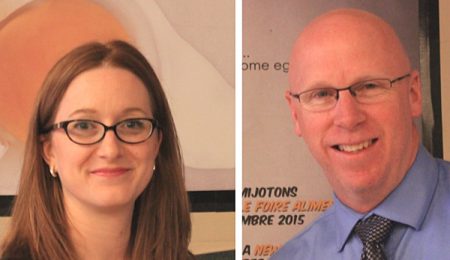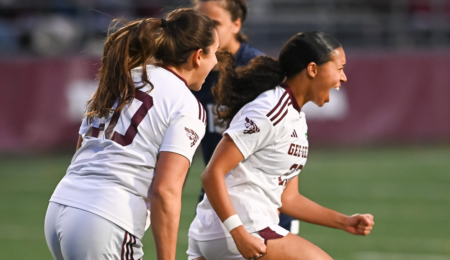U of O sports staff reflects on Luc Gélineau’s legacy
Photo credit: Annie-Claude Bastien-Lessard
On a campus often struggling to find space for its growing student population, Luc Gélineau leaves behind a legacy of sports facilities, services, and excellence.
His tenure at the University of Ottawa came to an end on Jan. 28 as he eased into retirement after 20 years as the top Gee-Gee. Gélineau began as the Gees’ athletic director in July 1996, and since then helped build the teams to nine national championships.
These days, you can find him in Europe relaxing and travelling with his wife to kick off the retired life.
“I have mixed feelings, but it’s time to go,” Gélineau said in an interview with the Ottawa Sun last month, after announcing his retirement. “My wife is retired. I enjoy working with my hands; my favourite toy is the chainsaw. And I really enjoy the outdoors. I’ll be doing some fishing in Temiskaming.”
His colleagues say he built a strong program from which the Gee-Gees can continue to grow. His biggest strength was in his ability to set business plans in place, said assistant athletic director Colin Timm. Both the Minto Sports Complex and the newer Lees Avenue facilities are the result of his long-term strategies.
“If we look at the success of our programs we have now, whether it’s our recreational program, our intramural program, or our varsity programs, they’re some of the most successful in the country,” said Timm.
“He had a plan all along to make sure the services are in a good business situation,” said sports information and events officer Jen Elliott. ‘“That was always his plan the last couple of years … It took a long time for things to come together and to act on the plans he was making.”
The U of O is one of the few universities in the country that has started to focus its attention on select sports programs. Instead of stretching themselves thin, Gélineau set an action plan in place in 2002 to establish larger resources for the teams and facilities.
“We’re seeing now eight or nine of our varsity programs are in the top 10 of the country, and we’re challenging now for a national championship,” said Timm. “His approach never really changed,” Elliott said of Gélineau. “But things are changing and happening quicker now because we are in a position to make those changes.”
Gélineau was also known by colleagues for his trust in delegation and recognition of staff talent.
“He was never the person to micromanage everything like some leaders,” said Andy Sparks, head coach of the women’s basketball team.
“He hired the right people for the right positions.” “He allows us as staff to develop, grow, make a mistake, and learn from it,” said Timm.“I don’t think Luc has ever shied away from getting the best staff he can get.”
Timm said that over the years Gélineau grew to understand the impact of his decisions on student athletes.
“I think he’s been able to relax a little bit more, and engage with the staff and the student athletes,” he said. “They started to get to know who he was.”
For the next athletic director to come, Timm said the biggest challenge will be to find more funding to continue developing facilities and programs to serve all students.
“They need to be engaging alumni, they need to understand the corporate marketplace, and they need to understand the challenges the university is going to face in the next five years,” he said.
Gélineau left his mark at the U of O—one that coaches, athletes, and staff alike experienced in some way over the years.
“He left a good legacy and better than when he found it,” said Sparks. “From an athletic perspective, he accomplished a lot.”





